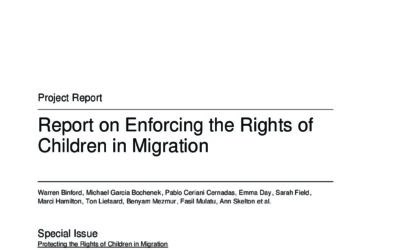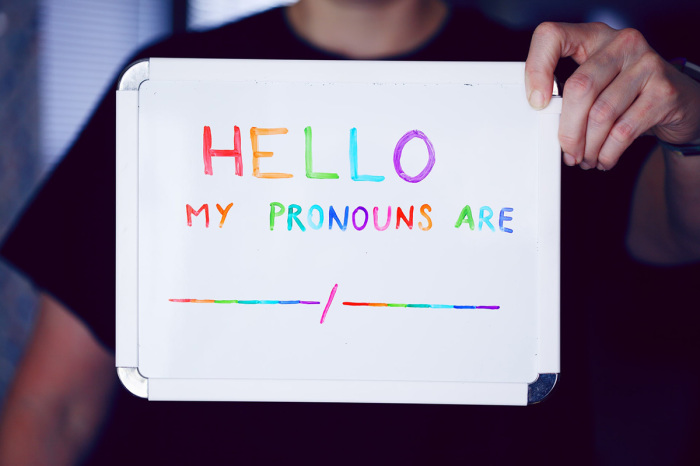University of Huddersfield research prokect examines links between school exclusion and criminal offending – EdTech Innovation Hub

Research Initiative to Address School Exclusion and its Impact on Sustainable Development Goals
1.0 Introduction and Context
A new research project, funded by a £166,000 grant from Administrative Data Research UK, has been launched to investigate the long-term outcomes for students excluded from school. This initiative responds to recent data indicating that school exclusions in England have reached their highest recorded levels, with a disproportionate impact on children with Special Educational Needs. The study will utilize a large-scale dataset from the education and criminal justice systems to analyze the profound social and economic consequences of this trend, which presents a significant challenge to national and global development targets.
2.0 Alignment with Sustainable Development Goals (SDGs)
The research directly addresses critical components of the United Nations’ Sustainable Development Goals. The project’s focus on educational exclusion, subsequent offending, and socio-economic well-being highlights the interconnected nature of these global objectives. Key alignments include:
- SDG 4: Quality Education: The study confronts the issue of educational inequality by examining the consequences of exclusion, a practice that undermines the goal of ensuring inclusive and equitable quality education for all, particularly for vulnerable groups like children with disabilities (Target 4.5).
- SDG 10: Reduced Inequalities: By focusing on a cohort of students disproportionately affected by exclusion, the research aims to provide evidence to reduce inequalities of outcome and promote the social inclusion of all children (Targets 10.2 and 10.3).
- SDG 16: Peace, Justice and Strong Institutions: The core of the research is the link between educational pathways and the justice system. Understanding this relationship is vital for developing strategies to prevent youth offending, promote the rule of law, and ensure equal access to justice (Target 16.3).
- SDG 3 (Good Health and Well-being) & SDG 8 (Decent Work and Economic Growth): The project acknowledges that school exclusion is linked to negative future outcomes such as mental health issues and unemployment, directly relating to the goals of promoting well-being (Target 3.4) and reducing the proportion of youth not in employment, education, or training (Target 8.6).
3.0 Research Objectives and Methodology
The primary goal is to generate robust evidence on the relationship between educational and offending outcomes. Previous studies have been limited by smaller datasets, whereas this research will provide a more comprehensive analysis. The specific objectives are as follows:
- To conduct a large-scale analysis of the economic and social impacts of both long-term and short-term school exclusions.
- To compare the life outcomes for different paths taken by excluded pupils over time.
- To track the specific offending patterns of excluded school children born between September 2000 and August 2003 who had at least one criminal record or caution by the end of 2021.
- To contribute to a deeper understanding of the causal links between educational failure and involvement in the criminal justice system.
4.0 Anticipated Outcomes and Policy Implications
The findings from this research are expected to provide critical insights for policymakers and practitioners in the education and justice sectors. By clarifying the long-term consequences of school exclusion, the study aims to better inform strategies designed to prevent and mitigate negative outcomes for vulnerable children. The ultimate hope, as stated by lead researcher Dr. Barrett, is to foster interventions that not only improve individual life chances but also contribute to the advancement of stronger, more inclusive institutions in line with the Sustainable Development Goals.
Analysis of SDGs, Targets, and Indicators
1. Which SDGs are addressed or connected to the issues highlighted in the article?
- SDG 4: Quality Education: The article’s central theme is school exclusion, which directly relates to providing inclusive and quality education for all children. It highlights failures within the education system to support vulnerable students.
- SDG 10: Reduced Inequalities: The article explicitly states that children with Special Educational Needs are more likely to be excluded, pointing to a clear inequality in educational access and outcomes for a vulnerable group.
- SDG 16: Peace, Justice and Strong Institutions: The research discussed in the article aims to analyze the link between school exclusion and the criminal justice system, referencing offending patterns and the disproportionate representation of excluded pupils in the prison population.
- SDG 8: Decent Work and Economic Growth: The article mentions unemployment as one of the negative future outcomes for excluded children, connecting educational failures to future economic participation.
2. What specific targets under those SDGs can be identified based on the article’s content?
- Target 4.1: “By 2030, ensure that all girls and boys complete free, equitable and quality primary and secondary education…” The high levels of school exclusion discussed in the article directly challenge the goal of ensuring all children complete their education.
- Target 4.5: “By 2030, …ensure equal access to all levels of education… for the vulnerable, including persons with disabilities…” The article’s finding that children with Special Educational Needs are more likely to be excluded directly relates to this target of ensuring equal access for vulnerable groups.
- Target 10.2: “By 2030, empower and promote the social, economic and political inclusion of all, irrespective of… disability…” School exclusion is a form of social and economic exclusion, particularly affecting children with disabilities (SEND), as mentioned in the article.
- Target 16.2: “End abuse, exploitation, trafficking and all forms of violence against and torture of children.” The link between school exclusion and negative outcomes like offending suggests a systemic failure to protect children and prevent them from entering harmful pathways.
- Target 8.6: “By 2020, substantially reduce the proportion of youth not in employment, education or training (NEET).” The article connects school exclusion to future unemployment, which is a key component of the NEET population this target aims to reduce.
3. Are there any indicators mentioned or implied in the article that can be used to measure progress towards the identified targets?
- Rate of school exclusions: The article explicitly mentions that “school exclusions in England reached their highest recorded levels,” making this a direct indicator for measuring the scale of the problem.
- Rate of school exclusions disaggregated by disability: The statement that “Children with Special Educational Needs were more likely to be excluded” implies the use of data broken down by student needs to measure inequality (Target 4.5 and 10.2).
- Proportion of the prison population with a history of school exclusion: The article notes that “excluded school pupils are disproportionately represented in the adult prison population,” which serves as an indicator of the long-term impact on the justice system (Target 16.2).
- Rate of criminal records among youth, disaggregated by exclusion status: The research methodology involves following “the offending patterns of excluded school children… with at least one criminal record or caution,” which can be used as an indicator to track the link between education and crime.
- Unemployment rate among young adults, disaggregated by exclusion status: The mention of “unemployment” as a negative future outcome implies that tracking employment data for this cohort is a relevant indicator for Target 8.6.
4. Table of SDGs, Targets, and Indicators
| SDGs | Targets | Indicators |
|---|---|---|
| SDG 4: Quality Education | 4.1: Ensure all children complete equitable and quality education.
4.5: Ensure equal access to all levels of education for the vulnerable, including persons with disabilities. |
Rate of school exclusions.
Rate of school exclusions, disaggregated by disability (Special Educational Needs). |
| SDG 10: Reduced Inequalities | 10.2: Empower and promote the social, economic, and political inclusion of all, irrespective of disability. | Rate of school exclusions for children with Special Educational Needs compared to the general student population. |
| SDG 16: Peace, Justice and Strong Institutions | 16.2: End abuse, exploitation… and all forms of violence against… children. | Proportion of the adult prison population with a history of school exclusion.
Rate of criminal records/cautions among youth, disaggregated by school exclusion status. |
| SDG 8: Decent Work and Economic Growth | 8.6: Substantially reduce the proportion of youth not in employment, education or training (NEET). | Unemployment rate among young adults, disaggregated by school exclusion status. |
Source: edtechinnovationhub.com

What is Your Reaction?
 Like
0
Like
0
 Dislike
0
Dislike
0
 Love
0
Love
0
 Funny
0
Funny
0
 Angry
0
Angry
0
 Sad
0
Sad
0
 Wow
0
Wow
0







































































